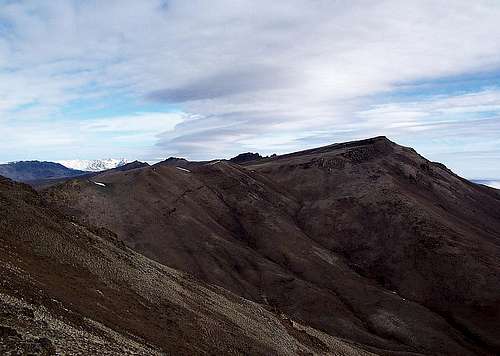|
|
Route |
|---|---|
|
|
42.34722°N / 118.70285°W |
|
|
Hiking |
|
|
Spring, Summer, Fall, Winter |
|
|
Half a day |
|
|
simple ridgewalk |
|
|
The 4 mile route to Alvord Peak
Although not the shortest route to Alvord Peak, this is probably the most scenic. From Long Hollow Pass on Highway 205 to Alvord Peak you will be traveling along a sometimes narrow ridgeline over a series of peaks at elevations ranging between 6400 feet and 7100 feet.Begin by parking at the rockpit on the north side of the highway. From here head uphill and east along the barbwire fence, rounding its 90 degree corner then up to the summit of Peak 6450. From here you will follow the ridgeline northeast to point 6542. From 6542 you will see Point 6970, a large triangular peak obscuring your view of Alvord Peak. You should begin making your way towards 6970 sidehilling down towards the saddle directly to the north. Follow the ridgeline northeast towards 6970, up and over it if you would like or around to the west and towards Buckwilder Pass. You will be forced to descend to 6500 feet through Buckwilder Pass and then up the summit cone of Alvord Peak. Reference the map below for route.

Getting There
Alvord Peak lies directly between Steens Mountain to the north, and Pueblo Mountain to the south. To reach the Long Hollow route, travel 42 miles south of Frenchglen on highway 205 to Long Hollow Summit at 5608 feet. Here you will find a rockpit on the north side of the highway. Providing no activity is taking place here, park and begin your journey. Note, Frenchglen is located 60 miles south of Burns in highway 205.
Above; the ridgeline you will be walking to reach Alvord Peak
Essential Gear
Water. Watch out for rattlesnakes and cougars. This area is devoid of trees so at least you'll see em coming.
Above; Looking up at Alvord Peak from Buckwilder Pass. At 6500 feet this lowpoint is a natural funnel for eastbound winds blowing across the Catlow Valley.

